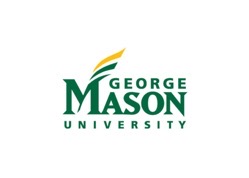 Deployed military personnel frequently face numerous health and safety hazards as part of their daily activities in service to their nation. Among many dangers is the possibility of encountering hemorrhagic fever viruses (HFVs), a group of highly infectious pathogens such as the Ebola virus. Many of these diseases do not currently have effective therapeutics and can be prevalent in areas where service members are deployed, putting them at risk of exposure.
Deployed military personnel frequently face numerous health and safety hazards as part of their daily activities in service to their nation. Among many dangers is the possibility of encountering hemorrhagic fever viruses (HFVs), a group of highly infectious pathogens such as the Ebola virus. Many of these diseases do not currently have effective therapeutics and can be prevalent in areas where service members are deployed, putting them at risk of exposure.
George Mason University infectious disease researcher Aarthi Narayanan has partnered with the United States Army Medical Research Institute of Infectious Diseases (USAMRIID) and Cyclica, a biotechnology company based in Canada, to identify potential broad-spectrum therapeutics for illnesses triggered by HFVs and similar pathogens.
“Tackling this challenge requires a multidisciplinary approach,” said Narayanan, who is an associate professor in the College of Science and a faculty member in the Department of Biology and the Institute for Biohealth Innovation. “With the support of a $3.2M grant from the Department of Defense, our team will be working to address the mechanisms by which some HFVs cause disease and using cutting-edge technology to keep military personnel and those they serve safe.”
USAMRIID and Mason will start by generating samples through exposure studies. Biosafety Level 3 pathogens will be examined at Mason’s Biomedical Research Laboratory, while USAMRIID will work with Biosafety Level 4 agents.
Mason will use its reverse-phase protein microarray (RPPA) to understand how cells communicate with other cells in a host’s response to infection. Specifically, the team is interested in changes to the cells that line blood vessels, also known as endothelial cells. In many cases, the viruses that will be studied lead to damage to endothelial cells as a result of hemorrhage, leading to severe illness or death.
